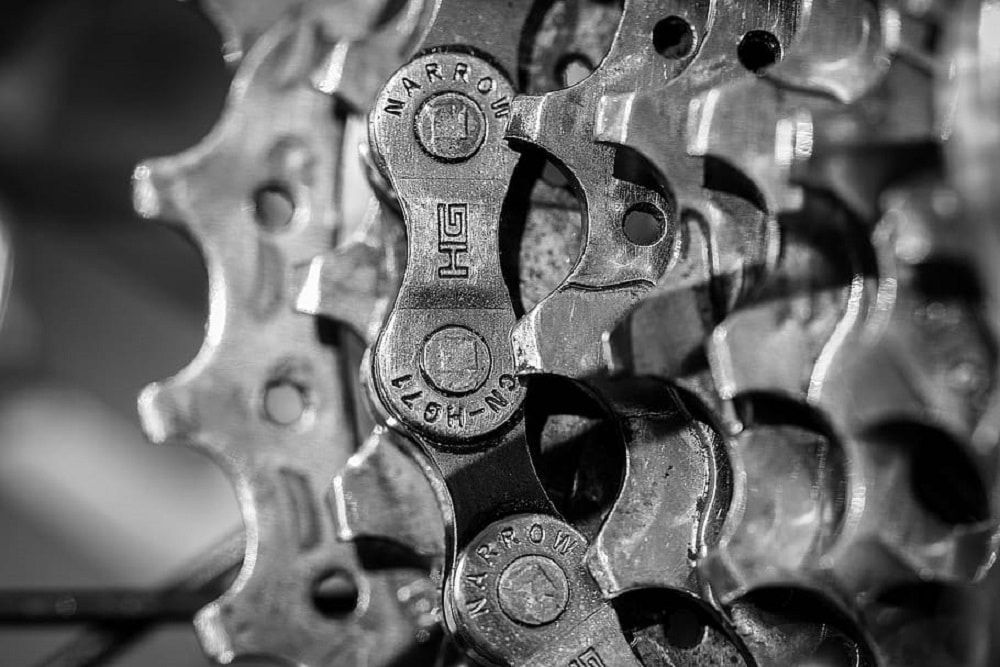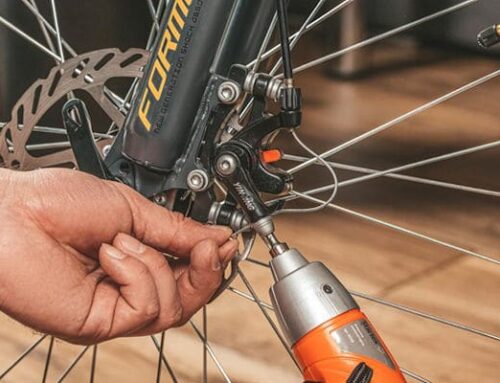One of the most overlooked and integral parts of your bike is the chain itself, as this is what delivers your power to the gears and what keeps you moving forward. However it’s often only when there’s some sort of mechanical error that any real attention gets given to the chain, as they aren’t one of the more flashy and expensive parts on your bike.

However the chain is incredibly important and making sure that it’s well cared for is one of the most important rules of bike maintenance, as a rusty chain will often affect other more expensive parts of the bike in all sorts of ways.
To give your chain a real clean it’s sometimes necessary to take the chain off the bike. This is also required if your chain is worn out or starting to fail, and when it comes time to remove the chain from the bike many people can be a little confused about how to do it.
One of the best and most convenient ways to remove a chain is using a master link, providing your bike actually has one.
If you’re not sure what it is, a master link is a special section of the chain that’s about the size of 1 link, and it’s designed to be easy to break the chain with this link making it very easy and simple to remove the chain from the bike.
In this guide we’re going to highlight how master links work, what bikes have them and how to locate them to make sure you’re able to take advantage of this the next time you need to remove your chain, as it will make your life so much easier and prevent stressing out your cranks or your derailleurs and keep your hands a little cleaner.
What bikes have a master link?
Unfortunately, despite their major convenience, not all bikes come with master links, and this is especially true of bikes that use derailleurs such as mountain bikes, downhill bikes, tourers, hybrids, commuters and road bikes.
While it’s possible to get a master link fitted after purchasing, most of these bikes won’t include one as standard.
However it is possible to fit a master link to your bike if you’d like to, and all you’ll need to do is break the chain with a chain tool and insert the master link into the chain by replacing one of the existing links.
If you’re getting your bike from a bike shop don’t be afraid to specify that you’d like a master link if you really want one, and they’ll usually be happy to fit one as part of a service or first time purchase.
Also, a spare master link or two can be super helpful to keep in your saddle bag or bike kit when you head out, as a broken chain means you won’t be going anywhere.
A master link can sometimes be used to reconnect your chain providing the bike or the chain isn’t too damaged, allowing you to limp back to base to actually fix the chain or get a replacement and deal with any other damage that may have occurred.
How do I find my master link if I have one?
Usually master links are pretty easy to spot as they will typically be a slightly shinier link in the chain that stands out from the other links.
Sometimes it may be harder to decipher which link is the master link, and another way to tell is to look for the small cutouts in the edges of the links that are used to slot the master link into place.
If you’re not sure or you can’t find it it’s a good chance that your bike doesn’t have a master link.
Another thing to note is that some chains can have more than one master link, and while this isn’t recommended, it’s always best to check to make sure your chain is as reliable as possible.
A chain with more than one master link is more prone to mechanical issues as the master link, while very convenient, isn’t as reliable as a standard chain link and if you do have to use two master links in an emergency, its best to try and spread them as far apart as possible to reduce the chances of a mechanical issue or failure.
Can I break my Chain Without a Master Link?
If you don’t have a master link it’s still possible to break your chain, it’s just a little less convenient than using a master link.
First of all, take the chain off the gears and lay it down so that it’s less likely to roll around and move as you work on it.
Using a chain tool or chain breaker, push the rivet out from between a link, and pull it out of the other side of the chain.
Repeat this on the other side of the link and voila, you’ve removed a link from your chain and can now safely remove the chain from the bike.
Make sure to keep the rivets, rollers and broken links somewhere safe to avoid losing them.
Chain tools are cheap and simple and once you’ve used them a few times it becomes quite easy to work with.
A tip that can sometimes be helpful is that you don’t always need to totally remove the rivet from between the links. You can push it through far enough to break the chain without totally removing it, making it a bit easier to keep track of where all your parts are.





